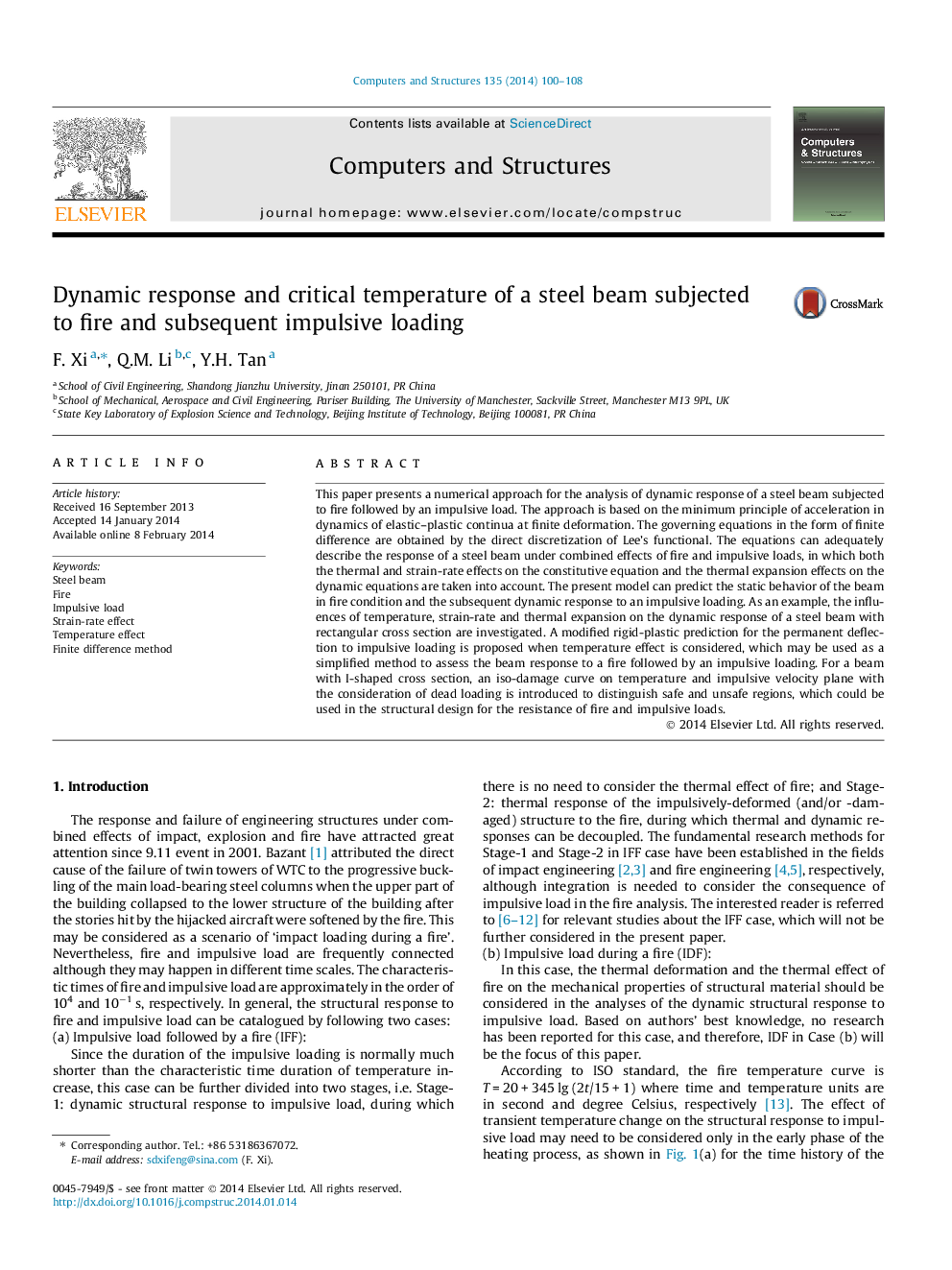| Article ID | Journal | Published Year | Pages | File Type |
|---|---|---|---|---|
| 509793 | Computers & Structures | 2014 | 9 Pages |
•A method for analysis of steel beams to fire and impulsive loading is proposed.•The method is based on the minimum principle of acceleration at finite deformation.•A modified rigid-plastic formula of permanent deflection to impulsive loading is presented.•The iso-damage curve on temperature-impulsive velocity plane is introduced to distinguish safe and unsafe areas.
This paper presents a numerical approach for the analysis of dynamic response of a steel beam subjected to fire followed by an impulsive load. The approach is based on the minimum principle of acceleration in dynamics of elastic–plastic continua at finite deformation. The governing equations in the form of finite difference are obtained by the direct discretization of Lee’s functional. The equations can adequately describe the response of a steel beam under combined effects of fire and impulsive loads, in which both the thermal and strain-rate effects on the constitutive equation and the thermal expansion effects on the dynamic equations are taken into account. The present model can predict the static behavior of the beam in fire condition and the subsequent dynamic response to an impulsive loading. As an example, the influences of temperature, strain-rate and thermal expansion on the dynamic response of a steel beam with rectangular cross section are investigated. A modified rigid-plastic prediction for the permanent deflection to impulsive loading is proposed when temperature effect is considered, which may be used as a simplified method to assess the beam response to a fire followed by an impulsive loading. For a beam with I-shaped cross section, an iso-damage curve on temperature and impulsive velocity plane with the consideration of dead loading is introduced to distinguish safe and unsafe regions, which could be used in the structural design for the resistance of fire and impulsive loads.
